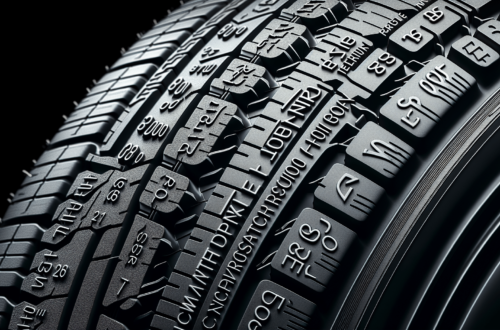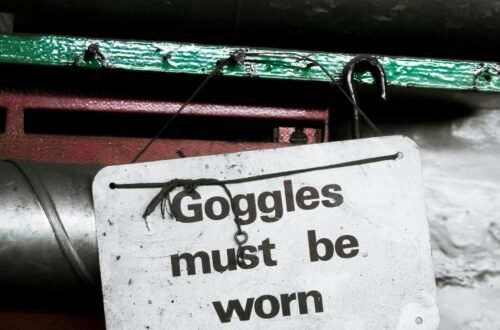The Importance of Following Safe Tire Inflation Guidelines
When it comes to your vehicle, there are many important maintenance tasks to keep up with to ensure its safety and longevity. One of the most crucial aspects of maintenance is maintaining proper tire inflation. This simple task can have a huge impact on your safety on the road as well as your vehicle’s overall performance. In this article, we will discuss the importance of following safe tire inflation guidelines and the consequences of neglecting this essential maintenance practice.
Understanding Tire Pressure
Before we dive into the importance of safe tire inflation guidelines, it’s crucial to understand what tire pressure is and why it’s essential to your vehicle’s overall performance. Tire pressure refers to the amount of air inside your tires, measured in pounds per square inch (PSI). The manufacturer of your vehicle provides a recommended tire pressure range for optimal performance, safety, and fuel efficiency.
When your tires are properly inflated, they provide stability, control, and traction on the road. Underinflated tires can lead to poor handling, reduced fuel efficiency, and an increased risk of accidents. Overinflated tires, on the other hand, can cause premature wear, reduced traction, and an uncomfortable ride.
Consequences of Overinflated Tires
Overinflated tires occur when there is too much air pressure inside the tire, causing it to bulge outwards. This can lead to several negative consequences, including:
- Decreased traction: Overinflated tires have a smaller contact patch with the road, reducing traction and increasing the likelihood of skidding, especially in wet or icy conditions.
- Uneven wear: The center of an overinflated tire bears the brunt of the vehicle’s weight, causing premature wear in the middle of the tread.
- Rough ride: Overinflated tires provide less cushioning against bumps and imperfections in the road, leading to a rougher and less comfortable ride.
- Increased risk of blowouts: Overinflated tires are more prone to blowouts, especially in hot weather or when driving at high speeds.
To avoid these consequences, it’s essential to check your tire pressure regularly and adjust it according to your vehicle manufacturer’s guidelines.
Consequences of Underinflated Tires
Underinflated tires occur when there is not enough air pressure inside the tire, causing it to bulge inward. This can lead to several negative consequences, including:
- Reduced fuel efficiency: Underinflated tires increase rolling resistance, requiring more energy to move your vehicle and decreasing fuel efficiency.
- Uneven wear: The edges of an underinflated tire bear more weight, causing premature wear on the outer edges of the tread.
- Poor handling: Underinflated tires are more prone to flexing and overheating, leading to reduced stability and control on the road.
- Increased risk of blowouts: Underinflated tires are more susceptible to damage from potholes, sharp objects, and other road hazards, increasing the risk of blowouts.
To avoid these consequences, it’s essential to check your tire pressure regularly and adjust it according to your vehicle manufacturer’s guidelines.
Importance of Safe Tire Inflation Guidelines
Properly inflating your tires according to your vehicle manufacturer’s guidelines is crucial for several reasons:
- Safety: Properly inflated tires provide optimal traction, handling, and stability on the road, reducing the risk of accidents and blowouts.
- Fuel Efficiency: Properly inflated tires reduce rolling resistance, improving fuel efficiency and saving you money at the pump.
- Longevity: Properly inflated tires wear more evenly, leading to a longer lifespan and saving you money on premature tire replacements.
- Comfort: Properly inflated tires provide a smooth and comfortable ride, reducing vibrations and noise inside the vehicle.
By following safe tire inflation guidelines, you can ensure that your tires perform at their best, keeping you safe and saving you money in the long run. To help you understand the importance of safe tire inflation guidelines, let’s break down the steps to properly inflate your tires and the tools you’ll need.

This image is property of images.unsplash.com.
Steps to Properly Inflate Your Tires
Inflating your tires may seem like a simple task, but it’s essential to do it correctly to ensure optimal performance and safety. Here are the steps to properly inflate your tires:
-
Gather Your Tools: To properly inflate your tires, you will need a tire pressure gauge, an air compressor, and a tire inflator with a pressure gauge.
-
Check the Recommended Tire Pressure: Refer to your vehicle owner’s manual or the tire placard located in the driver’s side door jamb or glove compartment to find the recommended tire pressure for your vehicle.
-
Inspect Your Tires: Before inflating your tires, visually inspect them for any damage, cracks, or bulges. Check the tread depth and look for any foreign objects embedded in the tires.
-
Remove the Valve Cap: Unscrew the valve cap from the tire’s valve stem and set it aside in a safe place.
-
Check the Current Tire Pressure: Use a tire pressure gauge to check the current pressure in each tire. Press the gauge onto the valve stem to get an accurate reading.
-
Inflate the Tires: Connect the air hose of the air compressor to the tire’s valve stem. Add air in short bursts, checking the pressure with the gauge periodically to avoid overinflating.
-
Check the Pressure Again: Once you’ve reached the recommended pressure, remove the air hose and check the pressure again with the gauge to ensure accuracy.
-
Replace the Valve Cap: Screw the valve cap back onto the valve stem securely to prevent dust and debris from entering the valve.
-
Repeat for All Tires: Repeat the inflation process for all four tires, ensuring that each tire is inflated to the correct pressure.
-
Final Check: Double-check the pressure in each tire and make any adjustments as needed to ensure all tires are properly inflated.
Following these steps will help you properly inflate your tires, ensuring optimal performance, safety, and longevity. It’s essential to check your tire pressure regularly, especially before long trips or changes in temperature, to maintain safe driving conditions.
Importance of Regular Tire Checks
While properly inflating your tires is crucial, regular tire maintenance is also essential to ensure your safety on the road. Here are some reasons why regular tire checks are important:
-
Tire Wear: Regular tire checks can help you identify uneven wear patterns, bulges, cracks, or other signs of tire damage, preventing a blowout or flat tire.
-
Tire Rotation: Rotating your tires regularly helps ensure even wear and extends the lifespan of your tires, saving you money on premature replacements.
-
Wheel Alignment: Checking your wheel alignment regularly can prevent uneven tire wear, improve handling, and ensure optimal fuel efficiency.
-
Tire Balancing: Balancing your tires helps distribute weight evenly, reducing vibrations and ensuring a smooth and comfortable ride.
By performing regular tire checks, you can maintain the performance, safety, and longevity of your tires, ensuring a smooth and comfortable driving experience.

This image is property of images.unsplash.com.
Tools for Checking Tire Pressure
To properly maintain your tires and ensure their safety on the road, you will need the following tools for checking tire pressure:
-
Tire Pressure Gauge: A tire pressure gauge is a handheld tool used to measure the air pressure inside your tires accurately. There are several types of tire pressure gauges available, including digital, dial, and stick gauges.
-
Air Compressor: An air compressor is a device that pumps air into your tires to inflate them to the recommended pressure. Portable air compressors are available for on-the-go inflation.
-
Tire Inflator with Pressure Gauge: A tire inflator with a pressure gauge is a convenient tool that allows you to inflate your tires to the correct pressure and check the pressure simultaneously. This all-in-one device is easy to use and ensures accurate inflation.
By investing in these tools and regularly checking your tire pressure, you can maintain the safety, performance, and longevity of your tires, keeping you safe on the road.
Conclusion
Maintaining proper tire inflation is essential for your safety, fuel efficiency, and overall vehicle performance. By following safe tire inflation guidelines, regularly checking your tire pressure, and investing in the necessary tools for tire maintenance, you can ensure that your tires perform at their best.
Remember to follow the steps outlined in this article to properly inflate your tires, check your tire pressure regularly, and perform regular tire checks to prevent accidents, blowouts, and premature tire wear. By taking care of your tires, you can enjoy a smooth and comfortable driving experience while staying safe on the road.





